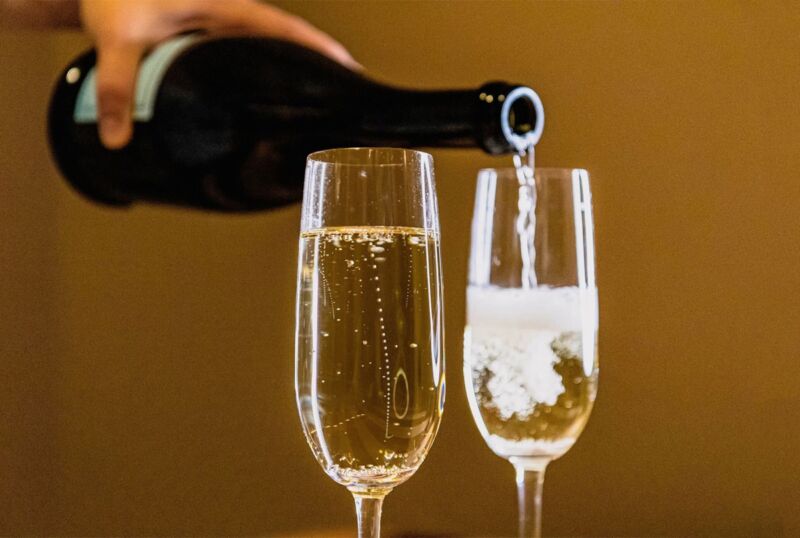
Brown University physicist Roberto Zenit has a knack for tying his fundamental fluid dynamics research to everyday phenomena, like enjoying a glass of champagne with friends. He noticed one day that the bubbles rising to the surface form stable vertical columns, unlike other carbonated beverages, where the wake of rising bubbles knocks other bubbles sideways so that multiple bubbles rise simultaneously. Zenit found that this is because surfactant molecules coat the champagne bubbles and encourage more swirling, thereby disrupting the wake, according to a new paper published in the journal Physical Review Fluids.
"Just observing a glass of a liquid super-saturated with carbon dioxide is like having a laboratory in front of you," Zenit told Ars. "It's a very good example of trying to understand hydrodynamic interactions. When two bubbles are moving one behind the other, they usually become misaligned because they create a disturbance in the liquid around them. We realized this was very different for champagne. If you know anything about bubble dynamics, that's not natural, so of course we were instantly intrigued."
Zenit has previously analyzed the fluid dynamics of modern painting techniques and materials pioneered by such luminaries as muralist David Siqueiros and Jackson Pollock, both of whom Zenit considers "intuitive physicists." Siqueiros' famous "accidental painting" technique involved pouring layers of paint on a horizontal surface and letting whorls, blobs, and other shapes form over time. The trick is to place a dense fluid on top of a lighter one to create a classic instability because the heavier liquid will push through the lighter one. According to Zenit, Pollock's dripping technique relied upon the same instability to produce curly lines and spots on his canvases.
Carbonation is another fascinating topic within fluid dynamics. As we've reported previously, champagne's effervescence arises from the nucleation of bubbles on the glass walls. Once they detach from their nucleation sites, the bubbles grow as they rise to the liquid surface, bursting at the surface. This typically occurs within a couple of milliseconds, and the distinctive crackling sound is emitted when the bubbles rupture. The bubbles "ring" at specific resonant frequencies, depending on their size, so it's possible to "hear" the size distribution of bubbles as they rise to the surface in a glass of champagne.
In 2021, physicists from Sorbonne University in Paris investigated the link between the fluid dynamics of the bursting bubbles and the crackly fizzy sounds in hopes of identifying the exact physical mechanism. The sound coincided with the rupture of the bubble as it neared the surface, but part of the bubble remained submerged and generated acoustic vibrations at the liquid-gas interface, with the frequency depending on the diameter of the hole in the bubble and the volume of gas within. So as the rupture grows, the frequency increases in pitch until the bubble "dies."
Other studies have shown that when the bubbles in champagne burst, they produce droplets that release aromatic compounds believed to enhance the flavor. Larger bubbles enhance the release of aerosols into the air above the glass—bubbles on the order of 1.7mm across at the surface. French physicist Gerard Liger-Belair of the University of Reims Champagne-Ardenne has used high-speed imaging to demonstrate that shock waves formed when a champagne cork was popped. He followed up in 2022 with computer simulations revealing that in the first millisecond after the cork pops, the ejected gas forms different types of shock waves—even reaching supersonic speeds and forming ring patterns known as shock diamonds—before the bubbly settles down and is ready to be imbibed.


:max_bytes(150000):strip_icc():format(webp)/GettyImages-183041146-2000-5452d6f7050e47d8b3b593673f162221.jpg)
3175x175(CURRENT).thumb.jpg.b05acc060982b36f5891ba728e6d953c.jpg)
Recommended Comments
There are no comments to display.
Join the conversation
You can post now and register later. If you have an account, sign in now to post with your account.
Note: Your post will require moderator approval before it will be visible.